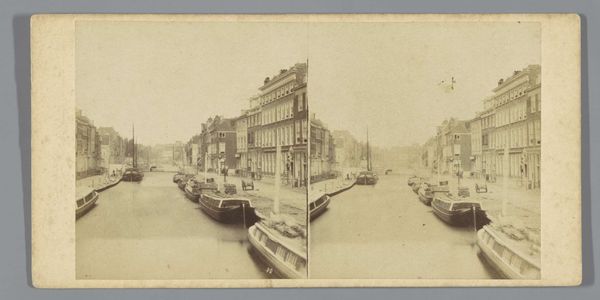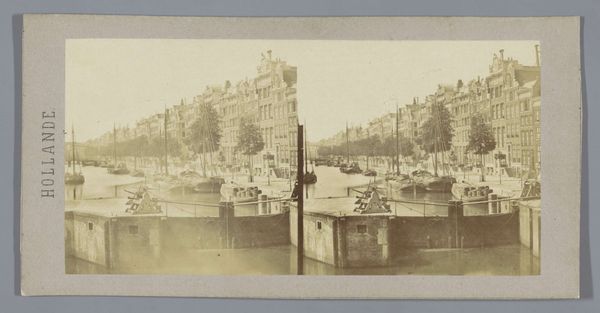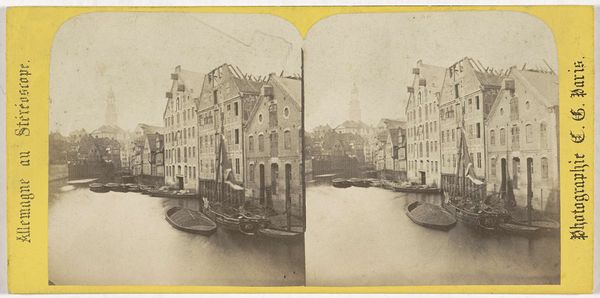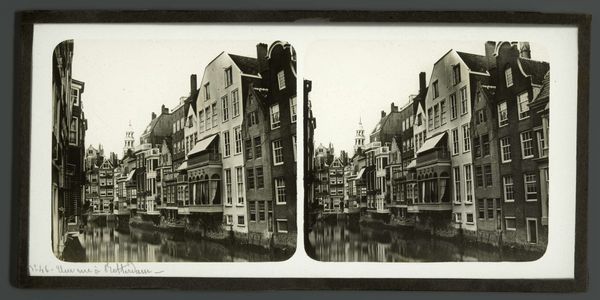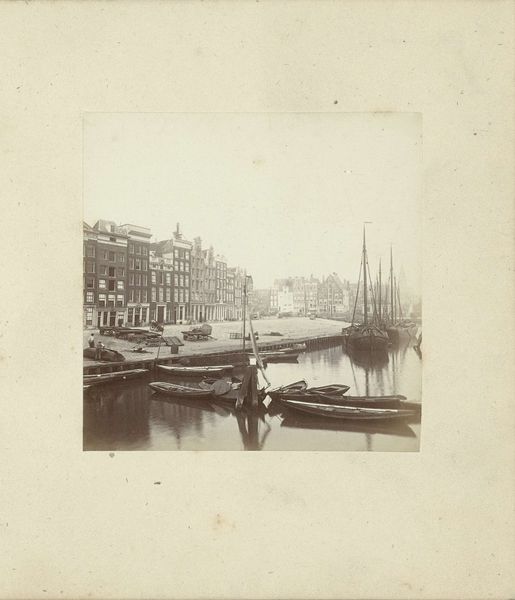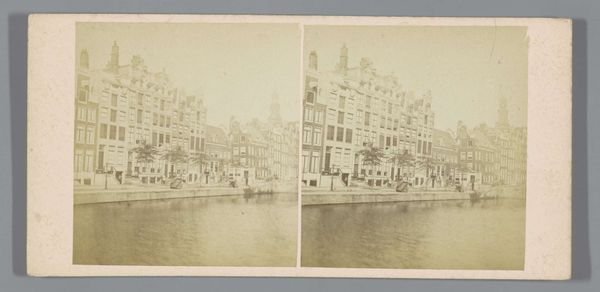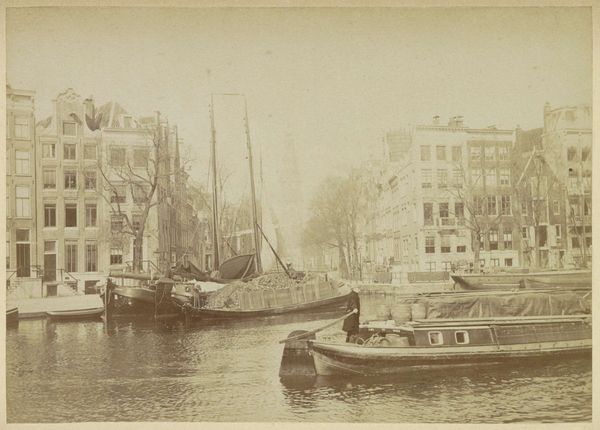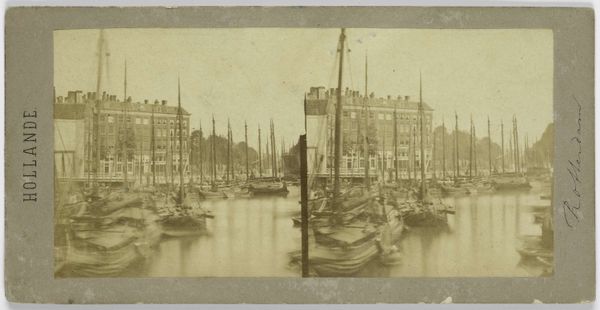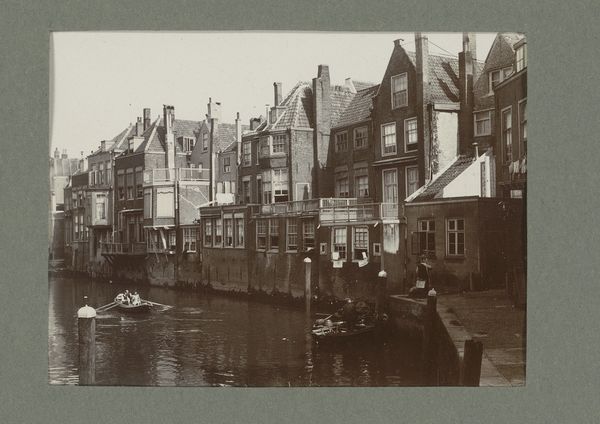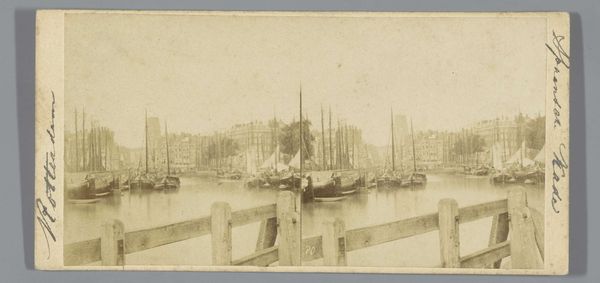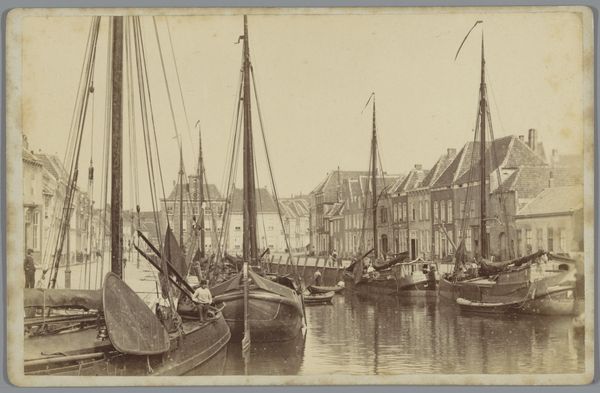
photography, gelatin-silver-print
#
dutch-golden-age
#
landscape
#
photography
#
gelatin-silver-print
#
cityscape
#
realism
Dimensions: height 88 mm, width 179 mm
Copyright: Rijks Museum: Open Domain
Curator: Here we have "Houtkopersburgwal, Amsterdam," a gelatin silver print by Andreas Theodorus Rooswinkel, dating from between 1868 and 1890. The gelatin silver print is mounted as part of a stereograph. Editor: The composition certainly projects a stillness. Despite the detailed reflections on the canal's surface and the activity hinted at by the boats, there's a solemn quality about these buildings and the water, almost as if time is suspended. Curator: I'm immediately drawn to the repetition and geometry within the photograph. Notice the strong horizontal lines of the buildings contrasted with their verticality and peaked roofs. This visual rhythm anchors the work. Also, note how Rooswinkel used the light to reveal surface variations. Editor: The photograph's stillness also gives rise to considerations about economy, urban development, and labor. It's worth wondering who lived and worked in these canal-side warehouses and what kind of society produced and depended on them. What stories do the long shadows hide, especially in contrast with the quiet shimmer of the water? Curator: Indeed. However, let's not neglect the visual language itself. Rooswinkel makes excellent use of light and shadow. Observe the textures he achieves with a limited grayscale palette, especially in the brickwork. It's about careful calibration. Editor: Of course, the composition and photographic technique provide one means of reading the artwork, yet the stark buildings speak more loudly to me about the human costs that made Amsterdam into a major international trading port. This could be considered an unintentional effect—or, perhaps Rooswinkel’s composition sought to provoke our reflections on such urban structures and the socio-political milieu in which they are produced. Curator: So you are saying the visual arrangement helps to explore different types of political economy, or how political forces can reconfigure global value chains. This is not incompatible with a reading centered around artistic and stylistic innovation in photographic techniques, such as those developed within Dutch Golden Age aesthetics. Editor: Precisely. Whether intentional or otherwise, the image operates within a specific network of production, representation, and ideological expression. Considering all these elements grants a far richer encounter with Rooswinkel's print than pure aesthetic formalism can ever accomplish. Curator: Perhaps, perhaps. Still, I am glad for the chance to engage with this fascinating image with fresh eyes, to assess how light and form coalesce.
Comments
No comments
Be the first to comment and join the conversation on the ultimate creative platform.
